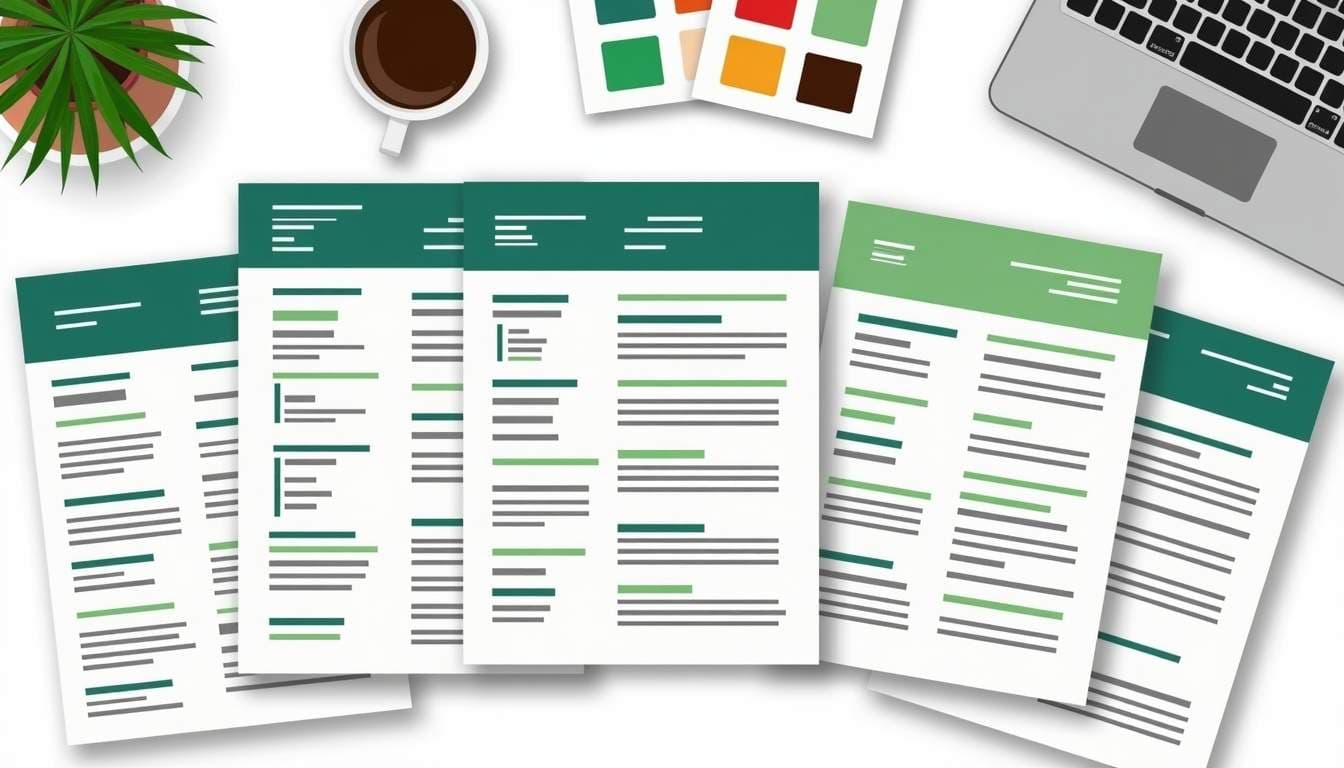In today’s competitive job market, your resume is often the very first impression you make on a potential employer. With recruiters spending an average of just six seconds glancing at a resume before making a decision, the design and clarity of your resume template can be just as crucial as the content itself. Choosing the right resume template can significantly enhance your chances of landing an interview and ultimately securing the job.
Why Resume Template Design Matters
A well-crafted resume template acts as a "visual handshake," creating an immediate and positive impression in the recruiter's mind. It sets the tone for how your qualifications and experiences are perceived before the recruiter even reads a single word. A clean, organized layout not only helps your resume stand out but also makes it easier for hiring managers to quickly identify your key skills and achievements.
On the other hand, a cluttered or overly complex design can work against you, pushing your resume straight into the 'no' pile. Striking a balance between personality and clarity is essential. Your resume should reflect your professional identity while remaining easy to scan and understand.
The Impact of Visual Appeal
Research shows that recruiters spend only about six seconds reviewing a resume initially. This brief window means that your resume template must be visually appealing and well-organized to capture attention immediately. Using clear headings, consistent fonts, and appropriate spacing can guide the recruiter’s eye through your resume and highlight your most important information.
For creative professionals, originality and design skills showcased through the resume template are highly valued. In fact, a survey by Saddleback College’s Career Center found that 78% of employers in the creative industry prefer resumes that demonstrate originality and design flair. Conversely, technical fields prioritize content clarity and precision, meaning a more straightforward, minimalist template often works best.
Moreover, the choice of color can also play a pivotal role in how your resume is perceived. Subtle, professional colors like navy blue or charcoal gray can convey seriousness and reliability, while softer shades or unique accents might express creativity and innovation. However, it's crucial to avoid overly bright or distracting colors that could detract from the content itself. A well-thought-out color scheme can enhance readability and ensure that your resume leaves a lasting impression without overwhelming the reader.
In addition to color, the use of visual elements such as icons or infographics can further elevate your resume's design. These elements can succinctly convey information, such as proficiency levels in different skills or a timeline of your career progression, making your qualifications more digestible. However, these should be used sparingly and strategically to maintain a professional appearance. When executed correctly, these design features can transform a standard resume into a compelling visual narrative that captures the essence of your professional journey.
Top Resume Template Designs to Consider
Choosing the right template depends on your industry, experience level, and the role you’re applying for. Below are some of the most effective resume template designs that can help you stand out in various fields.
1. The Classic Chronological Template
This is the most traditional and widely used resume format, listing your work experience in reverse chronological order. It’s ideal for candidates with a solid work history and clear career progression.
The chronological template’s strength lies in its simplicity and familiarity, making it easy for recruiters to scan. Using clean lines, clear section headers, and bullet points enhances readability. This format is particularly favored in technical and corporate roles where clarity and precision are paramount. Additionally, this template allows you to highlight promotions and significant achievements within your career timeline, reinforcing your growth and dedication to your profession.
2. The Modern Minimalist Template
Minimalist templates focus on clean design, ample white space, and straightforward typography. They avoid unnecessary graphics or embellishments, allowing the content to shine.
This style is perfect for professionals in fields like finance, engineering, or law, where a polished and professional look is essential. Minimalist templates help avoid clutter, ensuring that recruiters can quickly find your qualifications and skills without distraction. Furthermore, the use of subtle color accents can draw attention to key areas, such as your name or section titles, without overwhelming the overall aesthetic. This approach not only reflects a modern sensibility but also demonstrates your ability to communicate effectively and efficiently.
3. The Creative Template
Creative templates are designed to showcase originality and design skills, making them ideal for roles in marketing, design, media, and the arts. These templates often incorporate colors, icons, and unique layouts to express personality and creativity.




